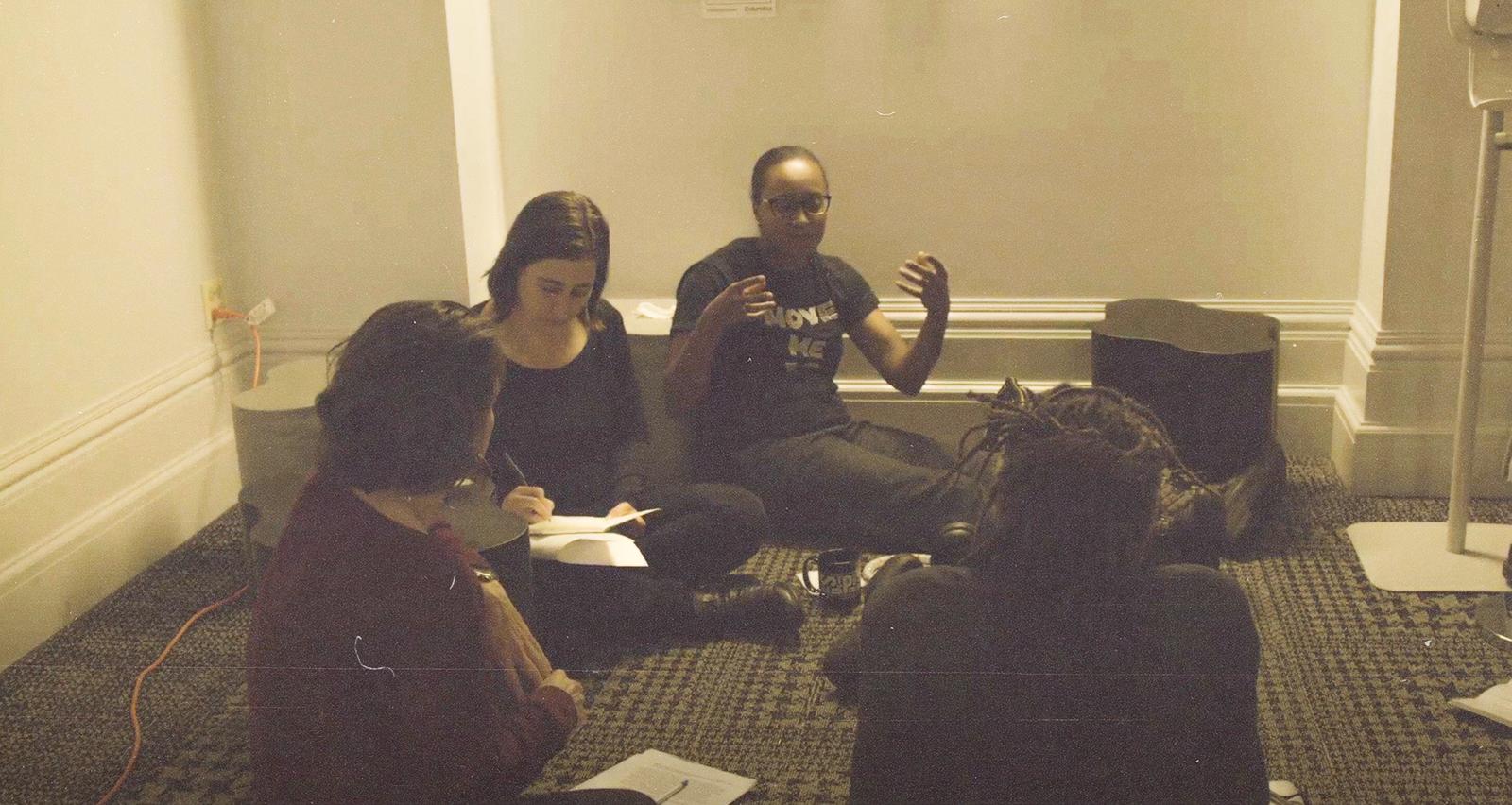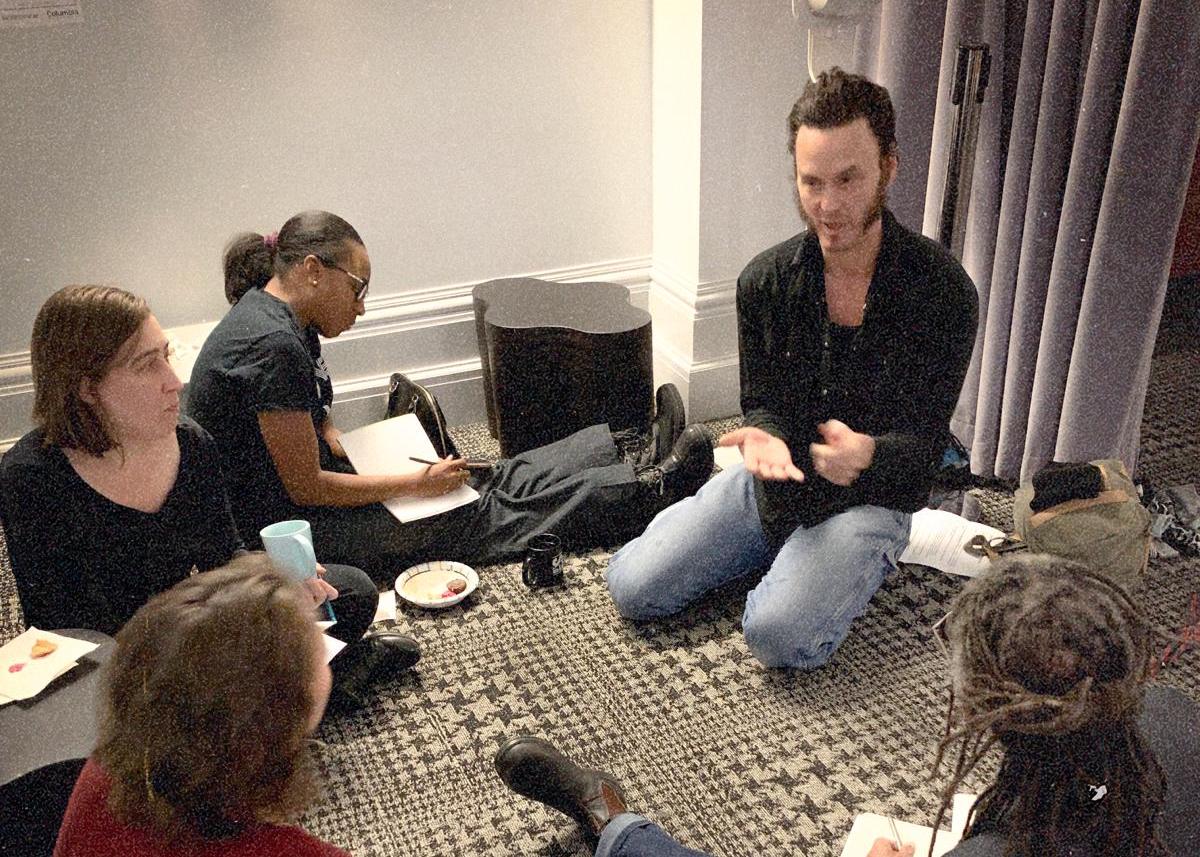/////////////SCROLL RIGHT
AUDIO INTRO
Methods. Is it digital or analog? Widely available online and through social media, or is it protected in some way? Is there a generational or historical perspective to consider? Is the work improvised or set? In the journey from initial concept to production, are all aspects of the process considered? You'll find a range of practices and concerns addressed in this section.
METHODS

Cori Olinghouse:
In my process, I use haptic forms of note taking that allow a fluid movement between creating and reflecting.
Tonya Lockyer:
Or perhaps, by the very act of so meticulously recording it, [John Cage] had helped manifest its importance.
Jane Jerardi:
I sometimes feel the desire to be selective about what I share with the world.
///////////////////////////////////

Diana Muhammad:
This availability [of video] provides easy access for study and reflection of a work.
WRITINGJ’Sun Howard:
Virtual Reality/Augmented Reality is becoming a new trend in dance…
Angie Hauser, Jacob's Pillow:
…whatever direction I might go in, [in order to] participate in a conversation around archiving, and to build process around archives, it would be to align [archiving] with how dance is actually made
VIDEOJonathan Meyer:
The onus is so often on artists rather than on the institutions that mean to support them.
Erin Kilmurray:
…peer/follower review + feedback + championing has been the active ingredient in pushing [my work] forward.

Ishmael Houston-Jones:
The process of my practice seems so fragile and elusive to the idea of archive. My choreography is (almost) never set in the tradition of Modern Dance or Ballet. Therefore, in those infrequent times when I have revived work that was created earlier with a different cast, the new cast is recreating the old work anew. In reality, this is true of the revival of any dance work but this seems much more unambiguous when that work is improvised. Which is “the piece?” What defines a choreography that has no set movement? What are the archival tools available to capture this work? The scattered notes I made in random notebooks hidden away in random drawers and boxes? VHS video tape? Digital transfers? Reviews, previews, and interviews in print or on blogs? Memory?
Bebe Miller, NYC:
As said by Michael Morris, you’re always dancing with your ancestors, you’re never alone. ...Darrell is extraordinary because he embraces that, brings out something about the whole Vault project for me… —the sense of the form and what the form is for, which has a lot to do with how we then document it and receive it.
Meeting NotesIshmael Houston-Jones:
…peer/follower review + feedback + championing has been the active ingredient in pushing [my work] forward.
Darrell Jones:
I have a personal interest in cataloging [my father’s materials as a creative tool with applications in movement research…
Angie Hauser, Jacob's Pillow:
The methodology of archiving [is] determined by the ephemera of the technology that’s available to you. Now, in a situation where we have so much information [... the] joy of finding archival contact sheets, etc. [and] seeing everything else that wasn’t selected, [can be lost.]
Meeting Notes
Bonnie Brooks:
The advent of personal, digital phones opened yet a wider avenue to cost-free recording and documentation.
Lauren Slone:
…I also get into strange conversations with myself about “proving” to friends that I’m doing something.
Dayna Hanson:
…it’s another example of a somewhat documentary impulse blurring into a creative one.
Dana Whitco, Jacob's Pillow:
…I was trying to figure out how to create a fundraising opportunity around process...lots of people are doing this.
//////////////////////////////////////
Angie Hauser:
…the archive that seems to be the most compelling, complex, and rich is the one that is my thinking body.
Mara Frazier: I would like artists to feel more welcomed into archives…
Ann Carlson: I admit I have on-going resentment about the conflation of live performance and the mediated copy.
Russell Lepley:
I am an early career dance-maker and have documentation of my complete works publicly available on streaming platforms YouTube and Vimeo… Attention to how my work is documented affects how institutions perceive my product which influences my future work directly… My work becomes more thoughtfully layered and more concise without those pressures.
Rachel Boggia, Jacob’s Pillow:
It's a challenge with any new technology to know whether to invent. I think in dance in the academic centers like Ohio State we're [...] often late adopters of technology because there's just not enough money for us to make big mistakes.
I'm assuming that a lot of the structures that help decide who gets archived reinforce a lot of institutional privilege, right? And and so. One way of countering that—besides actively countering it within institutions, which is would be a good idea—would be to think about what structures, monied institutions, can offer to people to do this for themselves, to some degree, or do this for each other, like communities of archiving.
A lot of non-proscenium oriented dances [...] are really underprivileged by video documentation.
/////////////////////////////

